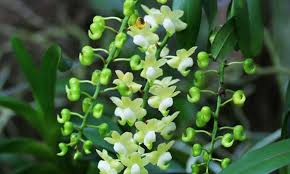
## Table of Contents
1. **Introduction**
2. **Understanding White Egg Orchids**
– 2.1 Characteristics of White Egg Orchids
– 2.2 Benefits of Growing White Egg Orchids
3. **Preparing Your Small Balcony**
– 3.1 Assessing Your Space
– 3.2 Choosing the Right Location
– 3.3 Considering Weather Conditions
4. **Selecting Containers and Growing Medium**
– 4.1 Choosing the Right Pots
– 4.2 Ideal Potting Mix for Orchids
5. **Planting White Egg Orchids**
– 5.1 Choosing Healthy Plants
– 5.2 Planting Process
– 5.3 Initial Care After Planting
6. **Caring for Your Orchids on a Balcony**
– 6.1 Watering Requirements
– 6.2 Fertilization Schedule
– 6.3 Light Conditions
– 6.4 Humidity and Temperature Control
7. **Managing Pests and Diseases**
– 7.1 Common Pests to Watch For
– 7.2 Preventive Measures
– 7.3 Treatment Options
8. **Seasonal Care Tips for Balcony Orchids**
– 8.1 Spring and Summer Care
– 8.2 Fall and Winter Considerations
9. **Design Ideas for Your Orchid Balcony**
– 9.1 Creative Container Arrangements
– 9.2 Vertical Gardening Solutions
10. **Conclusion**
11. **FAQs**
—
## 1. Introduction
Growing White Egg Orchids (Phalaenopsis amabilis) can be a rewarding and fulfilling experience, even in a small balcony space. These orchids are admired for their stunning white blooms and are relatively easy to care for, making them ideal for both novice and experienced gardeners. This guide will provide a comprehensive approach to successfully growing White Egg Orchids on a small balcony, ensuring that you can enjoy their beauty without compromising on space.
## 2. Understanding White Egg Orchids
### 2.1 Characteristics of White Egg Orchids
White Egg Orchids are a species of Phalaenopsis orchids, recognized for their elegant white flowers that can last for weeks. Here are some characteristics that make them a popular choice:
– **Size:** Typically, these orchids can grow up to 2 feet tall and 1-2 feet wide.
– **Flowers:** The blooms are large and waxy, usually featuring a delicate fragrance.
– **Leaves:** Dark green, thick, and leathery leaves add to their visual appeal.
### 2.2 Benefits of Growing White Egg Orchids
– **Aesthetic Value:** Their striking flowers can enhance the beauty of your balcony.
– **Air Quality Improvement:** Orchids help purify the air by removing toxins.
– **Psychological Benefits:** Gardening has been shown to reduce stress and enhance well-being.
## 3. Preparing Your Small Balcony
### 3.1 Assessing Your Space
Before you start planting, evaluate your balcony space:
– **Size:** Measure the available area to determine how many pots you can accommodate.
– **Surface:** Check if the balcony surface can support the weight of pots and plants.
### 3.2 Choosing the Right Location
Identify the best spots for your orchids:
– **Sunlight:** Look for areas that receive bright, indirect light, as direct sunlight can scorch the leaves.
– **Accessibility:** Choose locations that are easy to reach for watering and maintenance.
### 3.3 Considering Weather Conditions
Understand your local climate and how it affects balcony gardening:
– **Temperature:** White Egg Orchids thrive in temperatures between 65°F to 85°F (18°C to 29°C).
– **Wind Protection:** Ensure your balcony is sheltered from strong winds that could damage your plants.
## 4. Selecting Containers and Growing Medium
### 4.1 Choosing the Right Pots
Selecting the right pots is essential for the health of your orchids:
– **Material:** Use breathable materials like terracotta or plastic with drainage holes.
– **Size:** Choose pots that are slightly larger than the orchid’s root system to allow for growth.
### 4.2 Ideal Potting Mix for Orchids
Orchids require a specialized potting mix that provides adequate drainage and aeration:
– **Ingredients:** A good mix includes bark, sphagnum moss, and perlite.
– **Pre-Mixed Options:** You can also find pre-mixed orchid potting soil at gardening stores.
## 5. Planting White Egg Orchids
### 5.1 Choosing Healthy Plants
When selecting your orchids, look for healthy specimens:
– **Vibrant Leaves:** Ensure the leaves are deep green and firm.
– **Root Health:** Check that the roots are plump and free from rot.
### 5.2 Planting Process
Follow these steps to plant your White Egg Orchids:
1. **Prepare the Pot:** Add a layer of the potting mix at the bottom of the pot.
2. **Remove the Orchid:** Gently take the orchid out of its nursery pot, loosening the roots if necessary.
3. **Position the Plant:** Place the orchid in the center of the pot and fill in with potting mix.
4. **Water:** Water the plant lightly to settle the soil around the roots.
### 5.3 Initial Care After Planting
After planting, provide the right conditions:
– **Watering:** Allow the potting mix to dry slightly before watering again.
– **Light:** Position the newly planted orchid in a spot with bright, indirect sunlight.
## 6. Caring for Your Orchids on a Balcony
### 6.1 Watering Requirements
Watering is crucial for the health of your White Egg Orchids:
– **Frequency:** Water every 1-2 weeks, allowing the potting medium to dry out between waterings.
– **Technique:** Water thoroughly until water drains from the bottom of the pot.
### 6.2 Fertilization Schedule
To encourage healthy growth and blooms, fertilize regularly:
– **Type of Fertilizer:** Use a balanced orchid fertilizer, diluted to half strength.
– **Schedule:** Fertilize every two weeks during the growing season and monthly during dormancy.
### 6.3 Light Conditions
Proper light exposure is vital for orchids:
– **Ideal Conditions:** White Egg Orchids prefer bright, indirect light. If your balcony receives direct sunlight, use sheer curtains or place them in partial shade.
– **Monitoring:** Observe your orchids for signs of light stress, such as yellowing leaves or stretching towards the light.
### 6.4 Humidity and Temperature Control
Maintaining humidity and temperature is essential for orchid health:
– **Humidity Levels:** Aim for humidity levels between 40% and 70%. You can increase humidity by using a pebble tray filled with water or a humidifier.
– **Temperature Monitoring:** Ensure the temperature remains within the ideal range for orchids. If it gets too hot, consider moving them to a shadier spot.
## 7. Managing Pests and Diseases
### 7.1 Common Pests to Watch For
Be vigilant against pests that can harm your orchids:
– **Aphids:** These small insects feed on sap and can weaken plants.
– **Mealybugs:** They appear as white, cottony masses on the leaves and stems.
– **Spider Mites:** Tiny and difficult to see, these pests thrive in dry conditions and can cause leaf damage.
### 7.2 Preventive Measures
Taking preventive actions can help you avoid pest problems:
– **Regular Inspections:** Check your plants regularly for signs of pests or disease.
– **Cleanliness:** Keep your balcony and plants clean, removing debris that could harbor pests.
### 7.3 Treatment Options
If you encounter pests, act quickly to minimize damage:
– **Insecticidal Soap:** Use this organic treatment for soft-bodied pests.
– **Neem Oil:** A natural pesticide that can control a variety of pests while being safe for your plants.
## 8. Seasonal Care Tips for Balcony Orchids
### 8.1 Spring and Summer Care
During the growing season, your orchids will be more active:
– **Increased Watering:** As temperatures rise, you may need to water more frequently.
– **Fertilization:** Follow a regular fertilization schedule to support growth and flowering.
### 8.2 Fall and Winter Considerations
In the colder months, adjust your care routine:
– **Reduce Watering:** Water less frequently as growth slows down.
– **Humidity:** Monitor humidity levels, as indoor heating can dry out the air.
## 9. Design Ideas for Your Orchid Balcony
### 9.1 Creative Container Arrangements
Make your balcony visually appealing by arranging your orchids creatively:
– **Layered Heights:** Use varying heights for pots to create depth.
– **Color Coordination:** Choose pots that complement the white flowers for a cohesive look.
### 9.2 Vertical Gardening Solutions
If space is limited, consider vertical gardening:
– **Wall-mounted Planters:** These allow you to display your orchids without taking up floor space.
– **Trellises:** Incorporate trellises for climbing plants, adding an interesting focal point.
## 10. Conclusion
Growing White Egg Orchids in a small balcony space is not only possible but can also be incredibly rewarding. With the right planning, care, and creativity, you can create a stunning display that enhances your outdoor space. Remember to monitor your orchids regularly and adjust your care as needed, and soon you’ll enjoy the beauty of these exquisite flowers in your own home.
## 11. FAQs
1. **How much light do White Egg Orchids need?**
– They thrive in bright, indirect light. Too much direct sunlight can damage the leaves.
2. **How
often should I water my orchids?**
– Water every 1-2 weeks, allowing the potting medium to dry out between waterings.
3. **What should I do if my orchid is not blooming?**
– Ensure it receives adequate light, water, and nutrients. Sometimes, orchids need a rest period before flowering again.
4. **Can I use regular potting soil for my orchids?**
– No, orchids require a specialized potting mix that provides good drainage and aeration.
5. **How do I know if my orchid is healthy?**
– Healthy orchids will have vibrant green leaves, firm roots, and a lack of pests or disease.
By following this comprehensive guide, you can successfully grow and enjoy the beauty of White Egg Orchids on your small balcony, turning it into a lovely floral retreat. Happy gardening!


